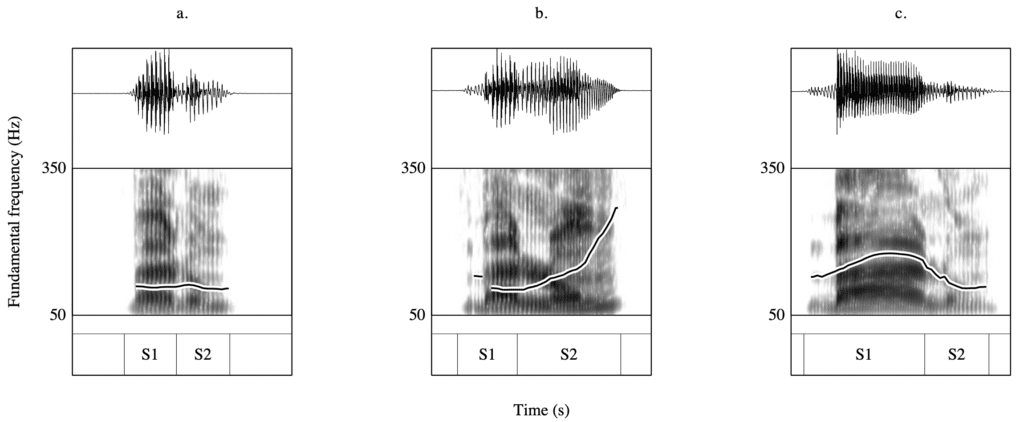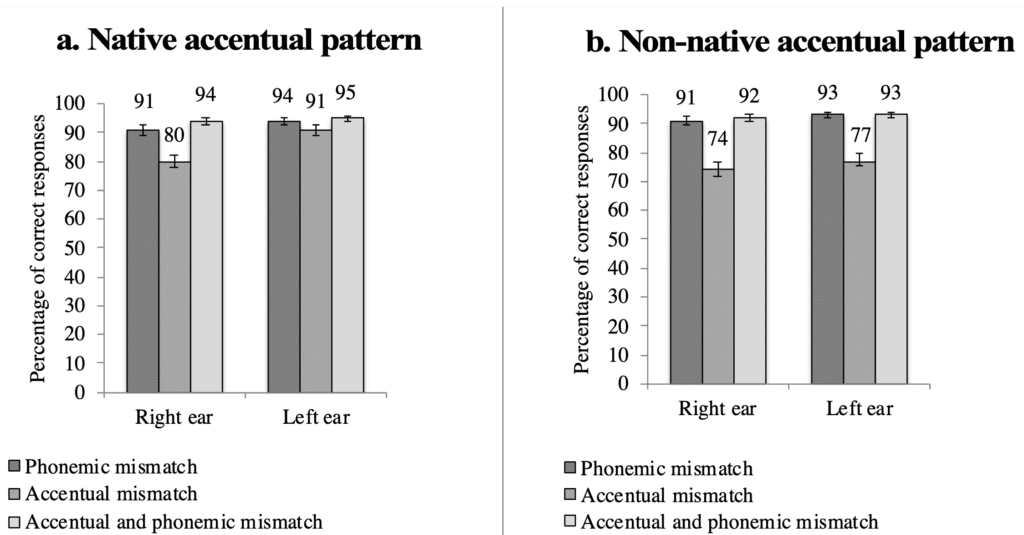Accentual variation at the word level refers to various ways of pronouncing the same lexical item (Figure A). This kind of variation does not have a contrastive role in French, so it should be processed non-linguistically by native French listeners. This hypothesis was tested in an ABX task by manipulating the ear of presentation, where native (/balɔ̃/ – /baˈlɔ̃/) and non-native (/ˈbalɔ̃/ – /baˈlɔ̃/) accentual pattern were tested.


(A) Phonemic and prosodic profile for the word /balɔ̃/ (“ball”) produced by a male voice (a) in its unaccented version /balɔ̃/, (b) with primary accent on its second syllable /baˈlɔ̃/, and (c) with primary accent on its first syllable /ˈbalɔ̃/. (B) Percentage of correct responses as a function of the ear of presentation, the type of mismatch, and the type of accentual pattern; (a) the native accentual pattern “unaccented /balɔ̃/ – accented 2nd syllable /baˈlɔ̃/” and (b) non-native accentual pattern “accented 1st syllable /ˈbalɔ̃/ – accented 2nd syllable /baˈlɔ̃/”. Error bars represent standard error.
The stimuli A and B varied either in accent (e.g., /ˈbalɔ̃/-/baˈlɔ̃/), in one phoneme (e.g., /baˈlo/-/baˈlɔ̃/), or both in accent and in one phoneme (/ˈbalo/-/baˈlɔ̃/). The native pattern resulted in similar performance with accentual and phonemic differences when stimuli were presented in the left ear, but worst performance with accentual differences than phonemic differences when stimuli were presented in the right ear (Figure B-a). The non-native pattern resulted in persistent difficulty, regardless of the ear of presentation, with worst performance with accentual differences than phonemic differences (Figure B-b).
These results suggest that a native contrast is processed as a non-native contrast when the stimuli were presented to the right ear, and thus when the processing was pushed into the left hemisphere. They also show that, for French native listeners, a non-native accentual contrast never reaches the performance of a native contrast, regardless of the cerebral hemisphere that primarily processes this information. More generally, the study reveals that a right-hemisphere advantage is observed in the processing accentual variation at the word level, and thus that this kind of information is processed as non-linguistic variation.
